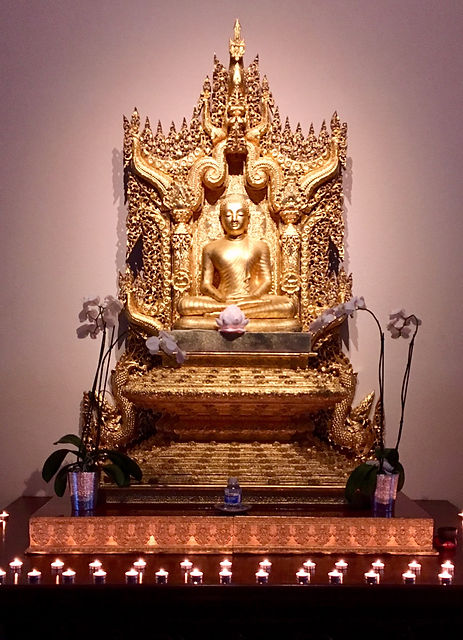Vipassanā Meditation

The Teachings of the Buddha
This unique meditation practice was first taught by the Buddha over 2500 years ago. Based on a foundation of moral purity, the meditator (yogi) methodically and precisely observes his or her own mind and body process. With the deepening of concentration, the yogi comes to develop a series of progressive insight knowledges that reveal the true nature of existence. When insight knowledge fully matures, the yogi attains path knowledge, fruition knowledge and Nibbāna.
The yogi thus comes to understand the Four Noble Truths (the truth of suffering, the origin of suffering, the cessation of suffering, and the path leading to the cessation of suffering) based on his or her own personal experience. Each stage of enlightenment weakens and eradicates varying degrees of kilesas (mental defilements of greed, hatred and delusion), and liberates one step by step from the suffering of repeated birth, aging and death in the endless cycle of existences.
The Moral Precepts
The effort to develop moral character is of paramount importance in Buddhism. By keeping the Five Precepts in daily life, one establishes a basic foundation of morality that is necessary for successful meditation. Clean actions and clean speech are essential for stabilizing the mind before one begins the work of mental purification. Developing one's moral character by keeping the precepts also helps prevent guilt and remorse from arising and disturbing one during practice. These precepts are:
1. To refrain from killing any living beings
2. To refrain from stealing
3. To refrain from sexual misconduct
4. To refrain from lying
5. To refrain from intoxicating drinks and drugs
During intensive retreats, yogis are expected to keep the Eight Precepts. Among the Eight Precepts, the third precept is different: one refrains from all sexual activity. The following three precepts are added to the five to make eight:
6. To refrain from taking food after twelve noon
7. To refrain from dancing, singing, music, watching shows, and from using adornments, cosmetics and perfumes.
8. To refrain from using high and luxurious seats or beds


Mahāsi Sayadaw's Instructions
The late Venerable Mahāsi Sayadaw's meditation instructions are based on the Buddha's original teachings on the four foundations of mindfulness in the Mahāsatipatthāna Sutta and other canonical texts. According to this method, the yogi is instructed to continuously and steadfastly observe the rising and falling of the abdomen as the main object during sitting meditation. Secondary objects such as pleasant and unpleasant feelings, wandering thoughts, various mental states and sensory contacts are also observed as they arise. Sitting meditation is practiced alternately with walking meditation, where the yogi focuses on the movements of the lower leg and foot while walking slowly and methodically. All other daily activities such as changing postures, eating, drinking, etc., as well as the acts of seeing, hearing, smelling, etc., are also observed as objects of meditation. Continuity of mindfulness (sati) along with courageous effort (viriya) leads to the development of vipassana momentary concentration (khanika samādhi) and the unfolding of insight knowledges.
The clarity and precision of Mahāsi Sayadaw's method has been proven over the years by innumerable yogis who have successfully practiced and achieved spiritual attainments that are in accordance with Buddhist scriptures.
Daily Practice
One should try to set aside a period of time every day for meditation. One hour a day is ideal, but even half an hour or fifteen minutes of meditation is better than none at all. The most important thing is to be consistent and make sincere effort to practice every day. Regular practice will help one develop the skills that are helpful for longer retreats. It is during sustained, intensive practice during retreats that one is most able to deepen one's concentration and gain transformative wisdom.
